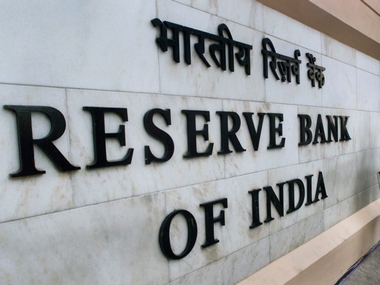Sometime later this month, the Reserve Bank of India (RBI) will launch a consumer price index-linked bond, apparently aimed at protecting the aam aadmi’s savings from a mauling by inflation. Unfortunately, the way it is structured, it holds little attraction for the average citizen.
[caption id=“attachment_1278793” align=“alignleft” width=“380”]  Reuters[/caption]
It is most likely to fall between two stools since it is unattractive both to the middle class (or people of average means) and sub-optimal for the high-net-worth individual, due to the low ceiling on annual investment. In short, the bond is a half-hearted attempt to create an inflation-indexed instrument that will satisfy no one.
On the contrary, the government and banks will benefit more from it than the people it is supposedly benefit.
The reason is complexity, lack of liquidity, long-tenure, and no possibility of earning a regular income from it.
Consider the features. The bonds will have a 10-year tenure, with a lock-in of one year for senior citizens (65+) and three years for the rest. If you exit early, you lose 50 percent of the interest earned in the year before.
The coupon rate will be 1.5 percent above CPI inflation - but the interest, both the fixed part and the inflation-linked part, will be cumulated and compounded every six months and paid only when the bonds mature. The ceiling on investment is Rs 5 lakh.
How will this help ordinary citizens earn a regular inflation-indexed income when all of it is going to come back only after 10 years? Exiting early means kissing goodbye to half the indexation benefit.
Now consider how the government and banks may end up benefiting from it.
First, banks will earn commissions from selling the bonds. Since these are not fixed deposits, they do not have to maintain any CRR or SLR on it. They will earn much-need fee incomes.
Second, since the interest is accruing every half-year, the investor will end up paying taxes on accrued (but not paid) interest every year even though he will get the payoff only after 10 years. In short, you don’t get regular income, but will regularly pay taxes accrued income. Will any senior citizen be happy paying income tax when he is around, while the moolah may come after he hands in his pail?
Third, the government will be earning in taxes from the CPI-linked bonds all through 10 years, while it will have to return the money only after 10 years. If inflation is high, it will earn more in taxes, and thus partially negate the idea of protecting the saver from its ill-effects. If the inflation is low, it will pay out less in cumulated interest.
In short, these are precisely the kind of products that suit high-net-worth individuals rather than the humble saver, but the Rs 5 lakh ceiling is too low to attract them. For the retired individual seeking to put his Rs 50 lakh of provident fund money into CPI-indexed bonds, there is both an upper limit (Rs 5 lakh) and the prospect of no income for 10 years. She would be better off investing in mutual fund fixed-maturity plans (where too the saver gets cost-inflation-indexation benefits on the principal), or in bank fixed deposits which give you 80C benefits, among other things.
To the ordinary Indian, the bank fixed deposit is the symbol of savings, and it is this small nest-egg that needs protecting. If the government really wants to give inflation-protection to ordinary savers, it is the bank-FD that needs to come into the picture for indexation.
The structuring of the CPI-indexed bonds, on the other hand, is more favourable for richer people. But not only is the investment limit too low, the alternatives (like tax-free bonds) are better. Tax-free bonds by quasi-sovereign public sector entities are clear winners for them - both on the counts of liquidity and pre-tax yields (currently over 12 percent for 20-year bonds). The investment limit is also higher for retail investors upto Rs 10 lakh.
The CPI-linked inflation bonds, as we noted at the outset, are not what the doctor ordered for the saver.


)
)
)
)
)
)
)
)
)



